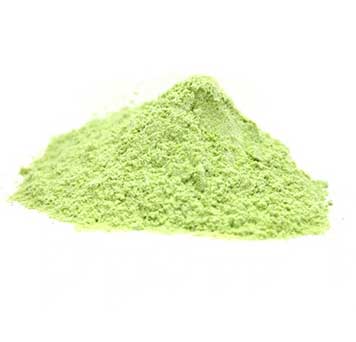
Understanding the Properties and Uses of Formic Acid HCOOH in Industry and Science
Formic Acid A Comprehensive Overview
Formic acid, chemically represented as HCOOH, is the simplest carboxylic acid. It is a colorless, pungent liquid known for its acidic properties and is primarily found in nature in various organisms, especially ants. The name formic is derived from the Latin word formica, meaning ant, highlighting the substance's natural origins. This article explores the properties, production, applications, and environmental implications of formic acid.
Properties of Formic Acid
Formic acid is a colorless, hygroscopic liquid with a strong, acrid odor. With a molecular weight of 46.03 g/mol, it has a boiling point of approximately 100.8 °C and a melting point of around 8.4 °C. The acid is highly soluble in water, and it can act as both an acid and a reducing agent. Its pKa value is about 3.75, making it a relatively strong acid compared to other carboxylic acids. Formic acid can form hydrogen bonds, allowing it to play significant roles in various chemical reactions.
Production of Formic Acid
Formic acid is produced both naturally and synthetically. In nature, it can be found in the venom of ants and in the secretion of some plants, which serve as a defense mechanism against predators. Industrially, formic acid is produced via two main processes the carbonylation of methanol and the hydrolysis of methyl formate.
The first method involves the reaction of methanol with carbon monoxide in the presence of a catalyst, usually a metal complex. The second method involves the reaction of methyl formate with water. With increasing demand for eco-friendly production processes, researchers are exploring the potential of bio-based synthesis methods, such as the fermentation of biomass, to produce formic acid sustainably.
Applications of Formic Acid
Formic acid has numerous applications across various industries, making it a highly versatile compound. One of its primary uses is in the textile industry, where it serves as a dyeing and finishing agent. Its ability to lower the pH of the dye bath helps improve the uptake of dyes in fabrics.
formic acid hcooh

Additionally, formic acid plays a crucial role in agriculture. It is used as a preservative and an acidifier in animal feed, promoting better digestion and nutrient absorption in livestock. The acid also serves as a fumigant for stored grain and as a treatment for beehives, helping to control varroa mite infestations.
In the chemical industry, formic acid is utilized as a building block in the synthesis of various chemicals, including plastics, rubber, and pharmaceuticals. Its reducing properties make it a valuable reagent in organic synthesis, aiding in the production of complex molecules.
Moreover, formic acid has been identified as a potential hydrogen carrier in fuel cell technology. Its high energy density and easy handling could position it as a sustainable alternative to fossil fuels in future energy systems.
Environmental Implications of Formic Acid
Despite its numerous applications, the environmental impact of formic acid must be carefully considered. While it is biodegradable and is considered relatively safe in small quantities, high concentrations can pose risks to human health and the environment. Inhalation of formic acid vapors can lead to respiratory irritation, while skin contact may cause burns or irritation.
Moreover, as with any industrial chemical, the production processes of formic acid need to be managed to minimize environmental contamination and greenhouse gas emissions. Striking a balance between industrial use and environmental sustainability is crucial for the future of formic acid production.
Conclusion
Formic acid is a vital chemical with significant roles in various industries. Its properties, production methods, and applications highlight its versatility and importance in modern society. As we advance towards sustainable practices, the development of eco-friendly production methods for formic acid will be crucial in mitigating its environmental impact while harnessing its benefits. The ongoing research and innovation in this field will determine the future landscape of formic acid usage, ensuring that it remains a valuable resource in a rapidly evolving world.
-
Pure Sodium Dichloroisocyanurate Dihydrate | Powerful DisinfectantNewsAug.29,2025
-
Industrial Chemicals: Quality & Purity for Every IndustryNewsAug.28,2025
-
Nitrile Rubber Honoring Strict Production StandardsNewsAug.22,2025
-
Aspartame Ingredients Honoring Food Safety ValuesNewsAug.22,2025
-
Fertilizer for Balanced Plant NutritionNewsAug.22,2025
-
Cyanide Gold Processing with High Purity AdditivesNewsAug.22,2025
-
Formic Acid in Textile Dyeing ApplicationsNewsAug.22,2025
Hebei Tenger Chemical Technology Co., Ltd. focuses on the chemical industry and is committed to the export service of chemical raw materials.
-

view more DiethanolisopropanolamineIn the ever-growing field of chemical solutions, diethanolisopropanolamine (DEIPA) stands out as a versatile and important compound. Due to its unique chemical structure and properties, DEIPA is of interest to various industries including construction, personal care, and agriculture. -

view more TriisopropanolamineTriisopropanolamine (TIPA) alkanol amine substance, is a kind of alcohol amine compound with amino and alcohol hydroxyl, and because of its molecules contains both amino and hydroxyl. -

view more Tetramethyl Thiuram DisulfideTetramethyl thiuram disulfide, also known as TMTD, is a white to light-yellow powder with a distinct sulfur-like odor. It is soluble in organic solvents such as benzene, acetone, and ethyl acetate, making it highly versatile for use in different formulations. TMTD is known for its excellent vulcanization acceleration properties, which makes it a key ingredient in the production of rubber products. Additionally, it acts as an effective fungicide and bactericide, making it valuable in agricultural applications. Its high purity and stability ensure consistent performance, making it a preferred choice for manufacturers across various industries.





